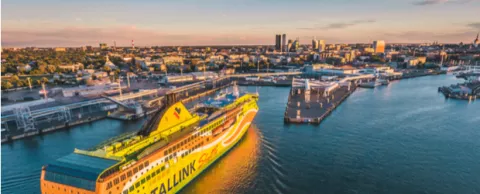
The Port of Tallinn is looking to up its sustainability game starting at square one with port traffic. Let’s dive deeper into the smart port project that will reduce traffic loads and minimize air pollution, thereby affecting the future of Tallinn’s shipping and cruising industry to make the experience a more seamless one for the passengers passing through each day.—Bruno De Man
Drafting a smart port design
With more than 10 million passengers passing through a port like Tallinn, Estonia each year, one of the main goals is to reduce traffic for both people and vehicles by simplifying check-in processes; shortening wait times; managing lines for vehicles coming on and off the board. According to Port of Tallinn CEO Valdo Kalm, “this entailed a mammoth feat of complex organisation” in the past, but now with the creation of a smart port application, this can all be easily achieved. The city has narrowed in on the issue of truck congestion caused by vehicles parking in the port before being loaded on ships. The pilot project for a smart port application will stop traffic jams by using a real-time waiting line system, halting trucks outside of the city centre and later directing them to the ship in an orderly and timely fashion to avoid congestion. Not only will this reduce traffic in the port area, which will lead to less air pollution, it will also lower waiting times for vehicles in port.
“Focusing on smart technology and digital solutions, with a keen eye on sustainability, is today’s way forward in terms of serving customers and reducing needless bottlenecks,” Kalm explains. “This not only has a direct impact on profits but also benefits society as a whole.”
With the smart port app, the shipping industry will finally receive the digital push it’s been missing and “steer the maritime industry into a new age,” making it more sustainable and profitable. The project will serve as a tool to streamline the port’s different databases and IT systems, making them efficient while ensuring security measures are in place with outgoing data digitally signed and encrypted. Couple these digital advances with sustainability solutions like the LNG-powered ferry, which excretes hardly any sulphuric compounds or soot particles on the world’s heaviest traffic route, and Tallinn serves as a modern-day example of how to digitalize the shipping industry and make it more sustainable, benefiting business, the city and the people using this mode of transportation.



